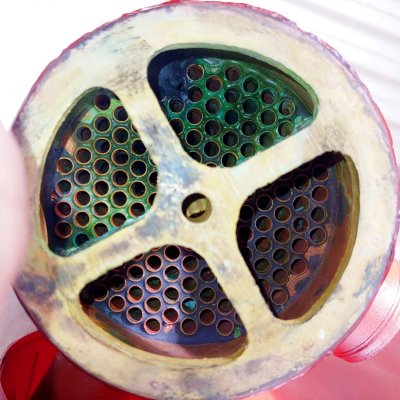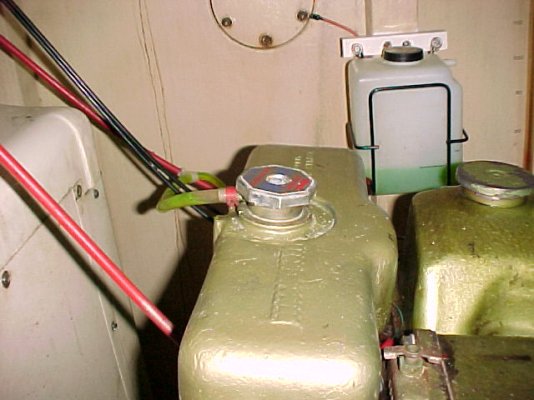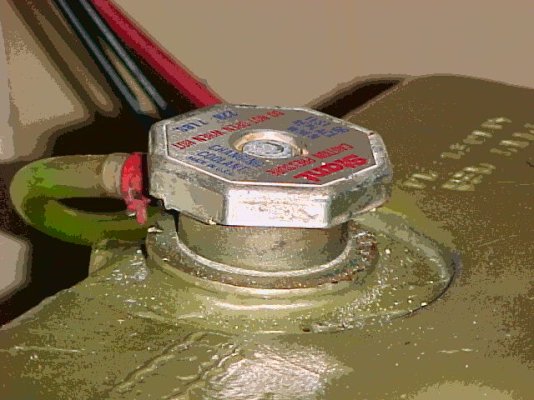Ford Lehman 2714E twins one with coolant in Oil
Hey Guys, seems this isn't a bad place to start as a few of you have had these issues before.
I recently Purchased a 1976 Grand Banks 36ft Aft Cabin here in Perth Western Australia, She has had most of the big ticket items done, Teak decks replaced with glass, Fuel tanks replaced with alloy and the engines and gearboxes rebuilt in 2018.
Now here my problem, my Port engine header tank is bubbling. I remove the head had it pressure tested. Tests perfect and valves seat like new, these engines only have 1600hours on them.
I have the exhaust elbow machines as it had a bit of pitting on the flange, Note I have read a lot about these gaskets failing. Which in turn leaks coolant into the oil via the exhaust. So I have been told while its apart just do it.
Now replaced all Oil coolers and heat exchanger as good measure, even though they are only 4 years old, New head gasket, Injectors serviced, new filter all round along with flushing the engines oil out 3 times !
I even replaced the Header tank and all hoses, Re-installed the head and manifold along with all new gaskets and seals, flushed the cooling system (coolant side) and ran the engine up to temp for half hour, re checked head bolts and all pipes fittings injector bolts the lot. Now after about an hour or 1000Rpm running the engine has used 1 or so litres of coolant (which I thought might be bleeding the system out) but the Oil has that look, slightly light in colour milky.
I am no Mechanic, (carpenter actually) but my understanding is for coolant to make its way into the oil it can either be Head Gasket, Exhaust elbow gasket, Front manifold gasket, Cracked head, Cracked Manifold or Cracked Block.
Am I right in saying that I should not being looking anywhere else ?
Im confident it wasn't the head gasket in the first place as when I pulled the head the gasket surfaces on the Head and Block has no broken visible seals.
I thought it may be the exhaust elbow as it was pitted and looked a little corroded, I am reasonably confident it now wasn't this or the front Coolant flange gasket.
Im looking for my next option here. Do I pressure test the header tank and listen for Air ? do I get a compression test done on each cylinder ? do I re do the 2 manifold gaskets.
Can I someone maybe run a video camera in the Manifold while doing a coolant pressure test to see this, Or does the engine need to be running and have exhaust pressure ?
I could pull the fuel kill switch and just pump the starter for a minute or so ?
I did notice the port side of the Port engine's block to look a little Porous compared to any other part of either engine (Just under the exhaust gasket)
Could of other things to note, I believe this engine may have had some electrolysis damage since 2018 as it used to share the common Ground/Earth Cable with the generator which was disconnected in 2018 and since then has not been earth with the rest of the boat.
Another thing to mention is the coolant was blackish and not clean in the engine. Starboard engine coolant looks like its just came out of the bottle and I have no issues with this engine what so ever.
Sorry to drag this out, If it is the Block do I need to remove it to get it tested and if the block is cracked where would it be cracked ? if the coolant header tank is bubbling then I assume its within the combustion chambers and not the crank case ? The coolant and oil are well mixed together.
Thanks in advance. Few photos attached
[/IMG]
https://imgur.com/ti8ifPr
https://imgur.com/hsQ5M8O[/IMG]












